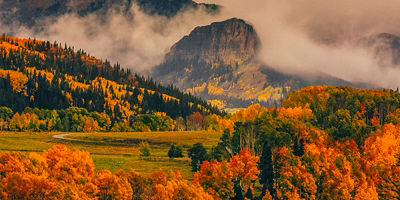
Most outdoor adventurers are only familiar with a small portion of America’s vast public lands open to all: iconic national parks like Yosemite, or maybe a few large national forests. National grasslands often get overlooked, but these open spaces contain rich history, incredible beauty, and ecological bounties that are often impossible to find elsewhere in the world.
The U.S. has 20 national grasslands totaling nearly 4 million acres of land. These preserves spill across the Great Plains and beyond, stretching from Texas to North Dakota and from California to Illinois. It’s time to get to know them.
History of the Grasslands
The national grasslands system was established in 1960 under the supervision of the U.S. Forest Service, but the history of the land stretches back much further. For thousands of years, the grasslands were part of a massive expanse of grass and wildflowers stretching across the Great Plains. Bison, elk, foxes, ferrets, and a wide variety of birds covered the expanse, roaming and relying on its varied plants for food—either eating them or preying on the animals who did.
It was not devoid of humans, of course. Many Native American tribes, including the Hunkpapa Sioux, Apache, Comanche, Cree, Crow, Shoshone, Teton, and Wichita, relied on the land to hunt game, gather food, and raise crops like maize and beans. For millennia, these tribes lived in harmony with the land and adapted to shifting weather patterns and droughts.
In the 1500s, Spanish and other European explorers began moving into the Plains. They brought horses, guns, trade, and conflict. Encroachment increased over the centuries and reached a fever pitch in the 1800s: Events like the Louisiana Purchase in 1803, the opening of the Santa Fe Trail in 1820, and the Homestead Act of 1862, which promised 160 acres of free land to white settlers who agreed to cultivate it, brought even more settlers into Indigenous lands. America’s desire for land ultimately led to decades of bloody conflict, the forced removal of Native Americans, the creation of reservations, and discriminatory laws like the Indian Removal Act of 1830.
By 1890, the once wide-open prairie now hosted 60 million settlers of European descent. In short order, they nearly eliminated the bison, and in the decades to come, their agricultural practices stripped away the grasslands’ thin topsoil and led to the Dust Bowl. By the 1930s, with the land across wide swaths of the Great Plains literally blowing away in the wind, it was clear that America’s grasslands were in need of help.






















